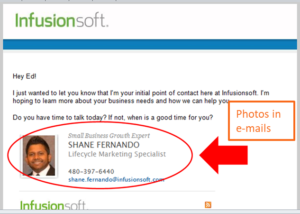 It’s possible to nudge your customer to behave in the ways both of you want.
It’s possible to nudge your customer to behave in the ways both of you want.
Psychologists have long known the power of priming, exposing test subjects to stimuli that influence behaviors, often without conscious guidance or intention. In just one of many experiments, researchers asked subjects to form grammatically correct sentences using test words such as “old,” “lonely,” and “bingo.” They assigned the control subjects the same task but using neutral words like “thirst,” “clean,” and “private.” Then experimenters surreptitiously clocked subjects walking the length of a corridor. Those exposed to elderly stereotypes walked the path 13% slower than the control subjects.[1]
Priming has also been shown to influence consumer choice. In one experiment, researchers assigned the task to construct sentences from a list of primed words including “prestige” or “frugal.” Then subjects were told to select a new pair of socks either from Nike (costing $5.25/pair) or Hanes (costing $6 for two pair). Participants chose the Nike socks when exposed to the prestige condition vs. the frugal condition by a factor of 2:1.[2] Priming had indeed swayed their decisions. Interestingly, during the debriefing none of the participants guessed the true purpose of the experiment or believed that the word puzzle had anything to do with their choices.
Good or Evil?
It’s unsettling to know that our decisions can be so easily manipulated. Ever since Vince Packard’s 1957 book, The Hidden Persuaders, which claimed movie theaters used subliminal advertising to coerce visits the concession stand (later proven a hoax), the public has feared commercial brainwashing. But in practice, flashing ads below conscious awareness produces very poor results.[3] Scientists have discovered that priming works best when it’s supraliminal, or shown in plain sight, and aligned with the goals people are already pursuing.[4]
Behavioral economist and Nobel laureate Richard Thaler uses the term nudge to describe an aspect added to the choice that alters people’s behavior in a predictable way without forbidding any options or significantly changing their economic incentives.[5] He cites several examples in which subconscious influencers encouraged people to do the right thing. For instance, simply rearranging the location of food items in a public school lunch line increased the consumption of healthy foods by 25%.[6] Asking people the day before an election if they intended to vote increased their probability of doing so by 25%.[7] Understanding how the mind works and deliberately triggering beneficial responses can lead to more virtuous outcomes.
Thaler acknowledges that this form of liberal paternalism can be harmful, and the Golden Rule should always be observed. For example, the government frequently frames language to serve its own ends, such as referring to post-9/11 domestic surveillance legislation as the Patriot Act instead of the Warrantless Wiretap Act. But that aside, Thaler says that people genuinely need help when important decisions are difficult and infrequent.[8] In these cases, there’s nothing wrong with a nudge that helps people make choices in alignment with their own best interests.
Application in Customer Success
Nothing replaces a history of rewarding experiences when it comes to a customer’s choice to renew or expand their software subscription. A SaaS company’s mission is to deliver the promised quality and value, and a CSM’s is to maximize the customer’s results and build strong, trusting relationships along the way. Done effectively, the renewal decision is then automatic—it literally becomes a “no brainer.”
But in addition to grappling with day-to-day crises, customers typically struggle to learn and change their approaches. To achieve the ultimate value they seek from new technology, customers can benefit from a nudge here and there, and CSMs can help.
Below are some of many possible tactics:
- Show your smiling face. Humans instantly judge trustworthiness on appearances. Include a photo of yourself in your e-mail signature to create a moment of connection and set the stage for a trusting relationship.

- I’m here to help. Prior to your Welcome Call, try sending a message with a photo showing how your company helps the community, such as participating in a food drive. This implicitly sends a message that you’re there for their benefit.
- My successful customers do this. People are naturally inclined to follow the crowd. Use the bandwagon effect when you want to encourage behaviors that conform to the norm.
- Repeat, repeat, repeat. If a customer is skeptical of an outcome you know to be real, take advantage of a bias called the illusory truth effect: the more people hear something, the more they think it’s true.
- Let me tell you a story. People tend to put themselves into narratives. In fact, studies show the brain activity of the listener mimics that of the storyteller, even going as far as predicting the ending. If a customer is facing a challenge you’ve seen before, share a vivid tale with a happy conclusion.

- The ball is in your court. Choose the analogy—returning a volley in tennis, taking a handoff in football, completing a double-play in baseball—but if a customer goes dark on you, try sending a photo of cooperation in a sport. Chances are better they’ll call you back!
- It could be worse. Small pricing changes rarely impact the customer’s ROI, but if you must break the bad news, take advantage of the anchoring effect. Humans perceive things in relative, not absolute terms, so state the change compared to others. For example, “We’re raising prices 20% for new accounts, but for our current customers, the adjustment is only 10%.” They’ll find it easier to stomach.

- Renew by default. If yours is a month-to-month contract, make the process opt-out instead of opt-in. Use monthly auto-deductions via a credit card or ACH, or if you’re sending an annual contract, use a one-click process with the “renew” button already checked. This approach leverages our natural inclination to maintain the status quo.
Under the right conditions, subtle communication can nudge (not shove) people to make desired choices. It’s achieved in alignment with the customer’s intentions but not necessarily through their conscious awareness. And it helps them automatically receive the benefits they’ve expected all along.
Sources:
[1] Bargh, A., Chen, M., Burrows, L. (1996) Automaticity of social behavior: Direct effects of trait construct and stereotype activation on action. Journal of Personality and Social Psychology, 1996, Vol. 71, No. 2, 230-244.
[2] Chartrand, T., Huber, J., Shiv, B., and Tanner, R. (2008). Nonconscious goals and consumer choice. Journal of Consumer Research, 35: 189-201, August 2008.
[3] Moore, T. (1982) Subliminal advertising: What you see it what you get. Journal of Marketing, 46: 38-47.
[4] Winkielman, P., Berridge, K., and Wilbarger, J. (2005) Unconscious affective reactions to masked happy versus angry faces influence consumption behavior and judgments of value. Society for Personality and Social Psychology, 31: 121-135
[5] Thaler, R., and Sunstein C. (2008) Nudge: Improving Decisions about Health, Wealth and Happiness, pp. 6. Penguin Books, New York, New York. ISBN 978-1-101-65509-2
[6] Ibid. pp. 1
[7] Ibid. pp. 71
[8] Ibid. pp. 74
